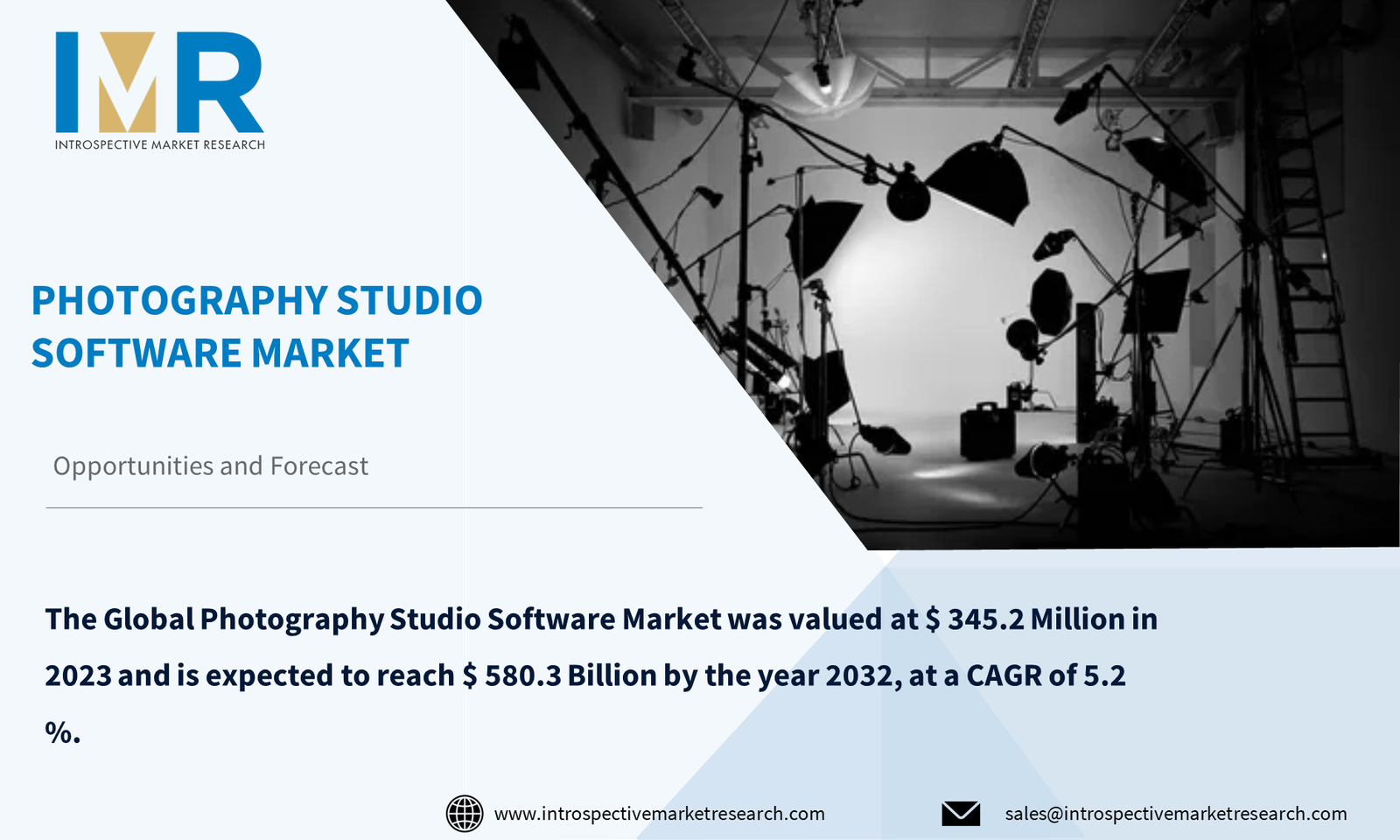
Data Integration Tool Market
According to a new report published by Introspective Market Research, titled, “Data Integration Tool Market by Component, Deployment, Organization Size, Vertical: Global Opportunity Analysis and Industry Forecast, 2024–2032,”
the global Data Integration Tool market size was valued at $ 1.51 billion in 2023, and is projected to reach $ 19.81 billion by 2032, registering a CAGR of 33.11% from 2024 to 2032.
Data integration tools act as the bridge between isolated data silos within an organization. These software programs are designed to streamline the process of merging information from various sources into a unified format, fostering a more comprehensive understanding of your business. Imagine a room filled with puzzle pieces from different puzzles - each with valuable information but meaningless on its own. A data integration tool helps assemble these fragmented pieces into a complete picture, providing a holistic view of data.
The functionality of these tools goes beyond simply bringing data together. Data integration tools handle the heavy lifting of data manipulation through a multi-step process. First, they extract data from diverse sources like databases, cloud applications, and flat files. This data can be structured, like customer records in a database, or unstructured, like social media posts. Data integration tools act like data vacuums, seamlessly pulling information from these varied sources. These tools clean and transform the data to ensure consistency and address any quality issues. This might involve removing duplicate entries, correcting errors in formatting or spelling, and converting data into a standardized format. Inconsistencies can arise due to different data collection methods or storage formats across various systems. Data integration tools act as data janitors, meticulously cleaning and organizing the information for analysis.
According to the global Data Integration Tool market analysis, the Market is segmented into Component, Deployment, Organization Size, Vertical and region. By Component, the market is categorized into Solutions and Services. By Deployment, the market is categorized into Cloud-Based, On-Premise and Hybrid. By Organization Size, the market is categorized into SMEs and Large Enterprise. By Vertical, the market is categorized into BFSI, Government & Public Sector, Healthcare & Life Sciences, IT & Telecom, Manufacturing, Media & Entertainment, and Others. By region, it is analyzed across North America (U.S.; Canada; Mexico), Eastern Europe (Bulgaria; The Czech Republic; Hungary; Poland; Romania; Rest of Eastern Europe), Western Europe (Germany; UK; France; Netherlands; Italy; Russia; Spain; Rest of Western Europe), Asia-Pacific (China; India; Japan; Southeast Asia, etc.), South America (Brazil; Argentina, etc.), Middle East & Africa (Saudi Arabia; South Africa, etc.).
The need for data integration is fueled by several key drivers. The ever-increasing volume of data generated daily makes it difficult to manage and analyze information stored in isolated systems. Businesses are constantly accumulating data from customer interactions, financial transactions, social media activity, and more. This data sprawl creates a challenge in obtaining a holistic view of operations. Additionally, the growing importance of data-driven decision making necessitates a centralized and reliable source of information. Businesses can't afford to base critical choices on fragmented or siloed data.
Data integration unlocks a treasure trove of opportunities for organizations. By consolidating data from various sources, businesses gain a 360-degree view of their customers, operations, and market trends. This comprehensive understanding empowers them to make data-driven decisions that optimize marketing campaigns, personalize customer experiences, and improve operational efficiency. Furthermore, integrated data facilitates advanced analytics, enabling businesses to identify hidden patterns, predict future trends, and develop innovative products and services. In today's competitive landscape, data integration presents a powerful opportunity to gain a significant edge and achieve sustainable growth.
Global Data Integration Tool Market, Segmentation
The Data Integration Tool market is segmented on the basis of component, deployment, organization size, vertical and region.
Deployment:
The market for data integration tools is dominated by the on-premise sector due to the preferences of many businesses that prioritize having internal control over infrastructure and place a strong emphasis on security and compliance. The localized and flexible approach offered by on-premise solutions guarantees that sensitive data stays inside the physical walls of the company. This control gives companies confidence, especially those in heavily regulated sectors. Furthermore, on-premise solutions enable customizable setups because they are designed to meet the integration needs of particular businesses. The on-premise market is expected to maintain its leadership despite the increasing ubiquity of cloud-based alternatives. This is due to the persistent need for reliable and flexible data integration solutions across various industries.
Organization Size:
The major enterprise category holds a significant market share in the Data Integration Tool market due to its unique requirements and extended activities. Large businesses require sophisticated integration solutions to improve decision-making and optimize operations due to their numerous data sources and large amounts of information. These organizations place a high priority on complete data integration solutions that can seamlessly unite dissimilar systems, assuring an efficient and seamless flow of information throughout the whole corporation. Large businesses need reliable solutions that offer scalability, flexibility, and cutting-edge functionality due to the scope of their operations. As a result, the market for data integration tools is significantly shaped by the big business segment, highlighting the necessity for powerful, scalable, and customizable integration solutions that are suited to the complex requirements of large corporate settings.
Region:
The market for data integration tools is dominated by North America, which has established its dominance through several causes. The region's prominence is largely due to its broad use of modern data integration techniques and technical know-how. To improve operational operations, businesses in North America's different industries place a high priority on efficient data management and seamless integration. The area is positioned as an important player in the industry because of its proactive approach to digital transformation and strong IT infrastructure. North America's supremacy is further bolstered by the existence of significant technological players and an early adopter culture. The continuous need for novel approaches and the adoption of state-of-the-art technology by businesses bolster North America's position as the dominant player in the ever-changing Data Integration Tool market.
Some of the leading Data Integration Tool market players are
- SAS Institute Inc. (US)
- Cisco System Inc. (US)
- Information Builders (US)
- Actian Corporation (US)
- Syncsort (US)
- Pitney Bowes Inc. (US)
- IBM (US)
- Informatica Corporation (US)
- Oracle Corporation (US)
- Talend (US)
- Microsoft Corporation (US)
- Denodo Technologies (US)
- HVR Software (US)
- Attunity Ltd. (US)
- Qlik (US)
- Salesforce (US)
- Tibco (US)
- Precisely (US)
- SAP SE (Germany)
- Software AG (Germany), and Other Major Players
Key Industry Developments:
- In September 2023, Salesforce and Snowflake collaboratively introduced a data-sharing-based integration platform. This platform facilitates seamless data sharing between Salesforce's Customer Relationship Management (CRM) system and Snowflake's cloud data platform. It enables organizations to leverage data-driven insights more effectively, enhancing customer experiences and data analytics capabilities.
- In May 2023, SAP SE and Google Cloud announced an extensive expansion of their partnership, introducing a comprehensive open data offering designed to simplify data landscapes and unleash the power of business data.
Key Findings of the Study
- The global Data Integration Tool market is projected to grow from $1.51 billion in 2023 to $19.81 billion by 2032, with a significant CAGR of 33.11% from 2024 to 2032. This growth is driven by the increasing need for seamless data management and integration across various business sectors.
- Despite the rise of cloud-based solutions, the on-premise segment is expected to dominate the market due to businesses' preference for internal control over infrastructure, emphasizing security and compliance. On-premise solutions offer customizable setups tailored to specific integration needs, especially in heavily regulated industries.
- Large enterprises hold a significant market share due to their extensive data integration requirements. These organizations require robust and scalable integration solutions to unify disparate systems and ensure efficient information flow across the corporation, facilitating better decision-making and operational optimization.






